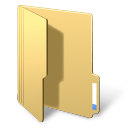Leaderboard
Popular Content
Showing content with the highest reputation on 10/26/2021 in all areas
-
For the examples above, you must use ROT objects. This is a server/client implementation of your FakeObj. Server.au3: #AutoIt3Wrapper_Au3Check_Parameters=-d -w- 1 -w 2 -w 3 -w 4 -w 5 -w 6 -w 7 #AutoIt3Wrapper_UseX64=Y Opt( "MustDeclareVars", 1 ) #include "IRunningObjectTable.au3" Global $oError = ObjEvent("AutoIt.Error", "_ErrFunc") Example() Func Example() Local $tFakeObj, $oFakeObj $oFakeObj = _ObjectFromTag("__MyInterface_", "Message hresult(bstr)", $tFakeObj) $oFakeObj.Message("Test message from Server .....") ; Create a default ROT-object (Dictionary object) Local $sDataTransferObject, $oDataTransferObject $oDataTransferObject = ROT_CreateDefaultObject( $sDataTransferObject ) ; Create Dictionary object Local $oDict = ObjCreate( "Scripting.Dictionary" ) $oDict.Item( "$oFakeObj" ) = $oFakeObj ; Add Dictionary object to ROT-object $oDataTransferObject.Add( "$oDict", $oDict ) ; Start the client script in a new process RunWait( @AutoItExe & " /AutoIt3ExecuteScript Client.au3" & " " & $sDataTransferObject ) EndFunc Func __MyInterface_QueryInterface($pSelf, $pRIID, $pObj) Local $tStruct = DllStructCreate("ptr", $pObj) DllStructSetData($tStruct, 1, $pSelf) Return 0 ; $S_OK #forceref $pRIID EndFunc Func __MyInterface_AddRef($pSelf) Return 1 #forceref $pSelf EndFunc Func __MyInterface_Release($pSelf) Return 1 #forceref $pSelf EndFunc Func __MyInterface_Message($pSelf, $pString) Local $o_Data = DllStructGetData(DllStructCreate("wchar[" & _ DllStructGetData(DllStructCreate("dword", $pString - 4), 1) / 2 & "]", $pString), 1) MsgBox(0, 'FakeObj', $o_Data) Return 0 ; $S_OK #forceref $pSelf EndFunc ; #FUNCTION# ============================================================================= ; Name...........: _ObjectFromTag ; ======================================================================================== Func _ObjectFromTag($sFunctionPrefix, $tagInterface, ByRef $tInterface, $fPrint = False, $bIsUnknown = Default, $sIID = "{00000000-0000-0000-C000-000000000046}") ; last param is IID_IUnknown by default If $bIsUnknown = Default Then $bIsUnknown = True Local $sInterface = $tagInterface ; copy interface description Local $tagIUnknown = "QueryInterface hresult(ptr;ptr*);" & _ "AddRef dword();" & _ "Release dword();" ; Adding IUnknown methods If $bIsUnknown Then $tagInterface = $tagIUnknown & $tagInterface ; Below line is really simple even though it looks super complex. It's just written weird to fit in one line, not to steal your attention Local $aMethods = StringSplit(StringReplace(StringReplace(StringReplace(StringReplace(StringTrimRight(StringReplace(StringRegExpReplace(StringRegExpReplace($tagInterface, "\w+\*", "ptr"), "\h*(\w+)\h*(\w+\*?)\h*(\((.*?)\))\h*(;|;*\z)", "$1\|$2;$4" & @LF), ";" & @LF, @LF), 1), "object", "idispatch"), "hresult", "long"), "bstr", "ptr"), "variant", "ptr"), @LF, 3) Local $iUbound = UBound($aMethods) Local $sMethod, $aSplit, $sNamePart, $aTagPart, $sTagPart, $sRet, $sParams, $hCallback ; Allocation $tInterface = DllStructCreate("int RefCount;int Size;ptr Object;ptr Methods[" & $iUbound & "];int_ptr Callbacks[" & $iUbound & "];ulong_ptr Slots[16]") ; 16 pointer sized elements more to create space for possible private props If @error Then Return SetError(1, 0, 0) For $i = 0 To $iUbound - 1 $aSplit = StringSplit($aMethods[$i], "|", 2) If UBound($aSplit) <> 2 Then ReDim $aSplit[2] $sNamePart = $aSplit[0] $sTagPart = $aSplit[1] $sMethod = $sFunctionPrefix & $sNamePart If $fPrint Then Local $iPar = StringInStr($sTagPart, ";", 2), $t If $iPar Then $t = "Ret: " & StringLeft($sTagPart, $iPar - 1) & " " & _ "Par: " & StringRight($sTagPart, StringLen($sTagPart) - $iPar) Else $t = "Ret: " & $sTagPart EndIf Local $s = "Func " & $sMethod & _ "( $pSelf ) ; " & $t & @CRLF & _ "EndFunc" & @CRLF ConsoleWrite($s) EndIf $aTagPart = StringSplit($sTagPart, ";", 2) $sRet = $aTagPart[0] $sParams = StringReplace($sTagPart, $sRet, "", 1) $sParams = "ptr" & $sParams $hCallback = DllCallbackRegister($sMethod, $sRet, $sParams) If @error Then ConsoleWrite('! ' & @error & ' ' & $sMethod & @CRLF & @CRLF) EndIf DllStructSetData($tInterface, "Methods", DllCallbackGetPtr($hCallback), $i + 1) ; save callback pointer DllStructSetData($tInterface, "Callbacks", $hCallback, $i + 1) ; save callback handle Next DllStructSetData($tInterface, "RefCount", 1) ; initial ref count is 1 DllStructSetData($tInterface, "Size", $iUbound) ; number of interface methods DllStructSetData($tInterface, "Object", DllStructGetPtr($tInterface, "Methods")) ; Interface method pointers Return ObjCreateInterface(DllStructGetPtr($tInterface, "Object"), $sIID, $sInterface, $bIsUnknown) ; pointer that's wrapped into object EndFunc ;==>ObjectFromTag Func _ErrFunc() ConsoleWrite("! COM Error ! Number: 0x" & Hex($oError.number, 8) & " ScriptLine: " & $oError.scriptline & " - " & $oError.windescription & @CRLF) Return EndFunc ;==>_ErrFunc Client.au3: #AutoIt3Wrapper_Au3Check_Parameters=-d -w- 1 -w 2 -w 3 -w 4 -w 5 -w 6 -w 7 #AutoIt3Wrapper_UseX64=Y Opt( "MustDeclareVars", 1 ) Example() Func Example() ; Get default ROT-object (Dictionary object) Local $oDataTransferObject = ObjGet( $CmdLine[1] ) ; Get Dictionary object from ROT-object Local $oDict = $oDataTransferObject.Item( "$oDict" ) Local $oFakeObj = $oDict.Item( "$oFakeObj" ) $oFakeObj.Message("Test message from Client .....") EndFunc Run Server.au3. Come on. This is f ... (freezing) cool code. That was fun. All code in the 7z-file. FakeObj.7z You can try the other two examples yourself.2 points
-
Have you checked out KPScript? I have a script for wrapping some KPScript commands in AutoIt functions, but most people hardcode them. Personally, I wouldn't store passwords in anything I've written because I don't trust myself to catch all the bugs. On the other hand, if it's a personal application on your personal device, I completely understand and I've even stored passwords in the scripts before1 point
-

Negation of a number to the power
Earthshine reacted to Melba23 for a topic
Konrad-Franz, Welcome to the AutoIt forum. As a programmer of some 50+ years experience I would never rely on operator precedence in any mathematical expression and would always use parentheses to make the order explicit. While this may make the original formulation of the expression slightly more onerous, the advantages of not having to rely on the arbitrary operator precedence (amply shown in the post above) of the various programming languages that might be used to evaluate it far outweigh this minor inconvenience. M231 point -
@LarsJ Thanks with _WinAPI_CreateFileMapping technique can I pass array Local $arry[][] = [["Blackberry",3],["Strawberry",4]] or object Local $oHttpObj = ObjCreate('WinHttp.WinHttpRequest.5.1') or this Global $oError = ObjEvent("AutoIt.Error", "_ErrFunc") __Example1() Func __Example1() Local $o_FakeObj Local $tFakeObj $o_FakeObj = _ObjectFromTag("__MyInterface_", "Message hresult(bstr)", $tFakeObj) $o_FakeObj.Message("Test message.....") If IsObj($o_FakeObj) Then $o_FakeObj = 0 EndFunc Func __MyInterface_QueryInterface($pSelf, $pRIID, $pObj) Local $tStruct = DllStructCreate("ptr", $pObj) DllStructSetData($tStruct, 1, $pSelf) Return 0 ; $S_OK EndFunc Func __MyInterface_AddRef($pSelf) Return 1 EndFunc Func __MyInterface_Release($pSelf) Return 1 EndFunc Func __MyInterface_Message($pSelf, $pString) Local $o_Data = DllStructGetData(DllStructCreate("wchar[" & _ DllStructGetData(DllStructCreate("dword", $pString - 4), 1) / 2 & "]", $pString), 1) MsgBox(0, 'FakeObj', $o_Data) Return 0 ; $S_OK EndFunc ; #FUNCTION# ============================================================================= ; Name...........: _ObjectFromTag ; ======================================================================================== Func _ObjectFromTag($sFunctionPrefix, $tagInterface, ByRef $tInterface, $fPrint = False, $bIsUnknown = Default, $sIID = "{00000000-0000-0000-C000-000000000046}") ; last param is IID_IUnknown by default If $bIsUnknown = Default Then $bIsUnknown = True Local $sInterface = $tagInterface ; copy interface description Local $tagIUnknown = "QueryInterface hresult(ptr;ptr*);" & _ "AddRef dword();" & _ "Release dword();" ; Adding IUnknown methods If $bIsUnknown Then $tagInterface = $tagIUnknown & $tagInterface ; Below line is really simple even though it looks super complex. It's just written weird to fit in one line, not to steal your attention Local $aMethods = StringSplit(StringReplace(StringReplace(StringReplace(StringReplace(StringTrimRight(StringReplace(StringRegExpReplace(StringRegExpReplace($tagInterface, "\w+\*", "ptr"), "\h*(\w+)\h*(\w+\*?)\h*(\((.*?)\))\h*(;|;*\z)", "$1\|$2;$4" & @LF), ";" & @LF, @LF), 1), "object", "idispatch"), "hresult", "long"), "bstr", "ptr"), "variant", "ptr"), @LF, 3) Local $iUbound = UBound($aMethods) Local $sMethod, $aSplit, $sNamePart, $aTagPart, $sTagPart, $sRet, $sParams, $hCallback ; Allocation $tInterface = DllStructCreate("int RefCount;int Size;ptr Object;ptr Methods[" & $iUbound & "];int_ptr Callbacks[" & $iUbound & "];ulong_ptr Slots[16]") ; 16 pointer sized elements more to create space for possible private props If @error Then Return SetError(1, 0, 0) For $i = 0 To $iUbound - 1 $aSplit = StringSplit($aMethods[$i], "|", 2) If UBound($aSplit) <> 2 Then ReDim $aSplit[2] $sNamePart = $aSplit[0] $sTagPart = $aSplit[1] $sMethod = $sFunctionPrefix & $sNamePart If $fPrint Then Local $iPar = StringInStr($sTagPart, ";", 2), $t If $iPar Then $t = "Ret: " & StringLeft($sTagPart, $iPar - 1) & " " & _ "Par: " & StringRight($sTagPart, StringLen($sTagPart) - $iPar) Else $t = "Ret: " & $sTagPart EndIf Local $s = "Func " & $sMethod & _ "( $pSelf ) ; " & $t & @CRLF & _ "EndFunc" & @CRLF ConsoleWrite($s) EndIf $aTagPart = StringSplit($sTagPart, ";", 2) $sRet = $aTagPart[0] $sParams = StringReplace($sTagPart, $sRet, "", 1) $sParams = "ptr" & $sParams $hCallback = DllCallbackRegister($sMethod, $sRet, $sParams) If @error Then ConsoleWrite('! ' & @error & ' ' & $sMethod & @CRLF & @CRLF) EndIf DllStructSetData($tInterface, "Methods", DllCallbackGetPtr($hCallback), $i + 1) ; save callback pointer DllStructSetData($tInterface, "Callbacks", $hCallback, $i + 1) ; save callback handle Next DllStructSetData($tInterface, "RefCount", 1) ; initial ref count is 1 DllStructSetData($tInterface, "Size", $iUbound) ; number of interface methods DllStructSetData($tInterface, "Object", DllStructGetPtr($tInterface, "Methods")) ; Interface method pointers Return ObjCreateInterface(DllStructGetPtr($tInterface, "Object"), $sIID, $sInterface, $bIsUnknown) ; pointer that's wrapped into object EndFunc ;==>ObjectFromTag Func _ErrFunc() ConsoleWrite("! COM Error ! Number: 0x" & Hex($oError.number, 8) & " ScriptLine: " & $oError.scriptline & " - " & $oError.windescription & @CRLF) Return EndFunc ;==>_ErrFunc @LarsJ can you show how to write DllStructCreate for the above array and object.1 point
-

get argument from c#
Leendert-Jan reacted to Musashi for a topic
Check out : CommandLine EDIT : For testing purposes, e.g. during development, you can also specify parameters within the SciTE-Editor-->,press SHIFT-F8.1 point -
The example of _WinAPI_CreateFileMapping in the help file contains all the code you need. Study this Microsoft example, if you need more information about this memory sharing technique and the required API functions.1 point
-
Based on the spy output and your comment there is a red rectangle (assuming its the size of your button) I guess your DPI scaling of the screen is not 100%. As spy is telling you this you know its recognized by using UIA library "title:=Next Image;ControlType:=UIA_ButtonControlTypeId" Then your next problem is how to invoke the button. Some options 1. Use the UIA invoke pattern (thats scaling independent, but not allways available) 2. Use the mousemove/mouseclick to the element boundingrectangle position to click (but then your DPI scaling could mean some addtional handling to do)1 point
-
Clicking button or sending shortcut to (stubbern) Windows - (Moved)
dejhost reacted to AlessandroAvolio for a topic
Yes it runs without problems. First a brief terminal and then the GUI (Win7 64 bit) https://tzutalin.github.io/labelImg/1 point -
It's best not to make your own password manager, it is incredibly hard and time consuming to patch all the holes... not counting the effort you'd need to go through to make it usable, especially outside Windows computers, like your phone. Just use KeePass, it's a secure and open-source password manager with all of the features you'd need, there are clients for Android and the main program itself is cross-platform. If you want to store files in a secure way, try VeraCrypt (TrueCrypt's defacto successor).1 point
-
I think this should be possible with my UDF. Create the mail item using $oItem = _Ol_ItemCreate $oItem.Display The user then can add attachments as he likes.1 point
-
May be this ? Func _GUICtrlListView_ClickItemMod($hWnd, $iIndex, $sButton = "left", $bMove = False, $iClicks = 1, $iSpeed = 1) If Not IsHWnd($hWnd) Then $hWnd = GUICtrlGetHandle($hWnd) _GUICtrlListView_EnsureVisible($hWnd, $iIndex, False) Local $tRECT = _GUICtrlListView_GetItemRectEx($hWnd, $iIndex, $LVIR_LABEL) Local $tPoint = _WinAPI_PointFromRect($tRECT, True) $tPoint = _WinAPI_ClientToScreen($hWnd, $tPoint) Local $iX, $iY _WinAPI_GetXYFromPoint($tPoint, $iX, $iY) Local $tCtrl = _WinAPI_GetWindowInfo($hWnd) $iX = DllStructGetData($tCtrl, 'rClient', 1) + 4 Local $iMode = Opt("MouseCoordMode", 1) If Not $bMove Then Local $aPos = MouseGetPos() _WinAPI_ShowCursor(False) MouseClick($sButton, $iX, $iY, $iClicks, $iSpeed) MouseMove($aPos[0], $aPos[1], 0) _WinAPI_ShowCursor(True) Else MouseClick($sButton, $iX, $iY, $iClicks, $iSpeed) EndIf Opt("MouseCoordMode", $iMode) EndFunc ;==>_GUICtrlListView_ClickItemMod1 point






